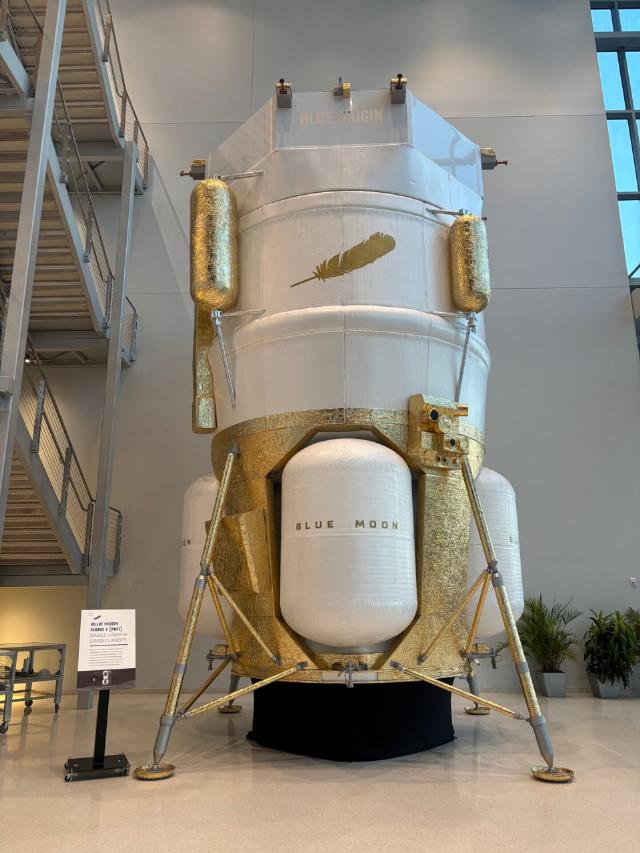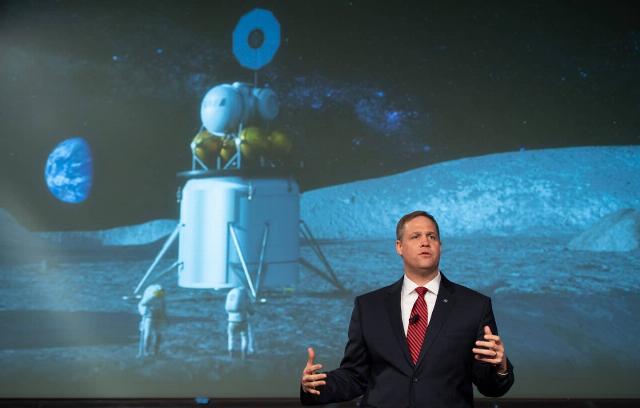They suggested that the delivery of astronauts to the Moon faster than the Chinese should be entrusted not to SpaceX with 500 launches into Earth orbit in its portfolio, but to another company. The total number of its orbital launches over a quarter of a century of existence is one.
One of the most famous space industry journalists of our era, Eric Berger, published an article that largely reflects not only his views, but also the opinions of a number of high-ranking NASA administrators and other representatives of the US space industry. In it, he repeated an earlier point of view that the United States was allegedly losing the new moon race to China and that Beijing would land astronauts on the Moon before the Americans (in 2029-2030). In his opinion, SpaceX may not have a Starship HLS ready to deliver people to the moon by this time.
The columnist spoke with dozens of anonymous sources in the local space industry to gather options for a "B" plan of action in case SpaceX fails to complete the task on time. Among them, they mention, for example, the "stripped-down Starship HLS" so that it can be used to deliver people to the Moon without orbital refueling. Berger regarded the option as a working one, but noted that Musk would ignore it, since he was not interested in the Moon, and for the colonization of Mars, a stripped—down Starship was just a waste of effort and money on extraneous tasks.
Then the journalist mentioned the option of recreating NASA's lunar lander from the 1960s. However, he himself came to the conclusion that only the traditional players of the American space industry, useless in the current race, can do it. If in the 1960s they worked expensively but quickly, today, due to the loss of experienced personnel, they act very slowly, which is why they obviously won't have time to change anything.
Berger and his sources believe that the only realistic option is to urgently commission the creation of a new lunar lander by Blue Origin. It was founded before SpaceX, in 2000, and is owned by Jeff Bezos, Musk's poorer competitor. That is, it does not apply to the American "old cosmos" with its corruption and moderately talented management staff.
Berger believes that its lunar module for delivering people can be created on the basis of the Blue Moon Mark 1 (MK1) cargo lander, which Blue Origin developed to deliver lunar rovers and other robotic payloads to Selena. The total mass of MK1 is 21.35 tons, with a payload of 3.0 tons on the lunar surface. That is, this device is 40 percent more massive than the lunar landing module of the Apollo program.
However, it was not designed to deliver astronauts to the Moon and back to lunar orbit. Therefore, it is necessary to add a life support system for several days and the possibility of taking off from the lunar surface back into orbit. Since the payload will decrease, astronauts will have to be landed on one module, and picked up by the second.

A full-size mock-up of the Blue Moon Mark 1. The first flight copy of such a device should be launched in the winter of 2026. Unless, of course. It won't be delayed like many other Blue Origin trials before it.
Image source: Eric Berger
And these are not just the non-trivial ideas of one journalist. Berger mentions that an unnamed Blue Origin representative stated that the company's engineers were confident that such an approach to landing on the moon would work. That is, the columnist voiced the point of view of a player who wants to take the place of SpaceX.
From a technical point of view, the attempt to replace Starship HLS with Blue Moon Mark 1 raises a number of questions. The latter uses oxygen-hydrogen fuel. The boiling point of hydrogen is much lower than that of methane. Therefore, it is difficult to provide the right amount of liquid fuel in the tanks (another argument in favor of two modules instead of one).
But to use the second module for evacuation, astronauts will have to walk more than one kilometer. From the experience of previous moon landings, it is known that the lunar lander covers its surroundings with a decent layer of lunar dust, threatening the operation of a wide variety of devices — from solar panels to spacesuits (they poisoned the air from lunar dust).
The MK1's limited payload capabilities mean that there may not be lunar vehicles on board, and hiking on the Moon with the current technological level of American spacesuits is a serious problem even for hardy astronauts.
Previously, Naked Science analyzed in detail why, contrary to the doubts of the American space industry, Starship would end up on the Moon before Chinese astronauts.

